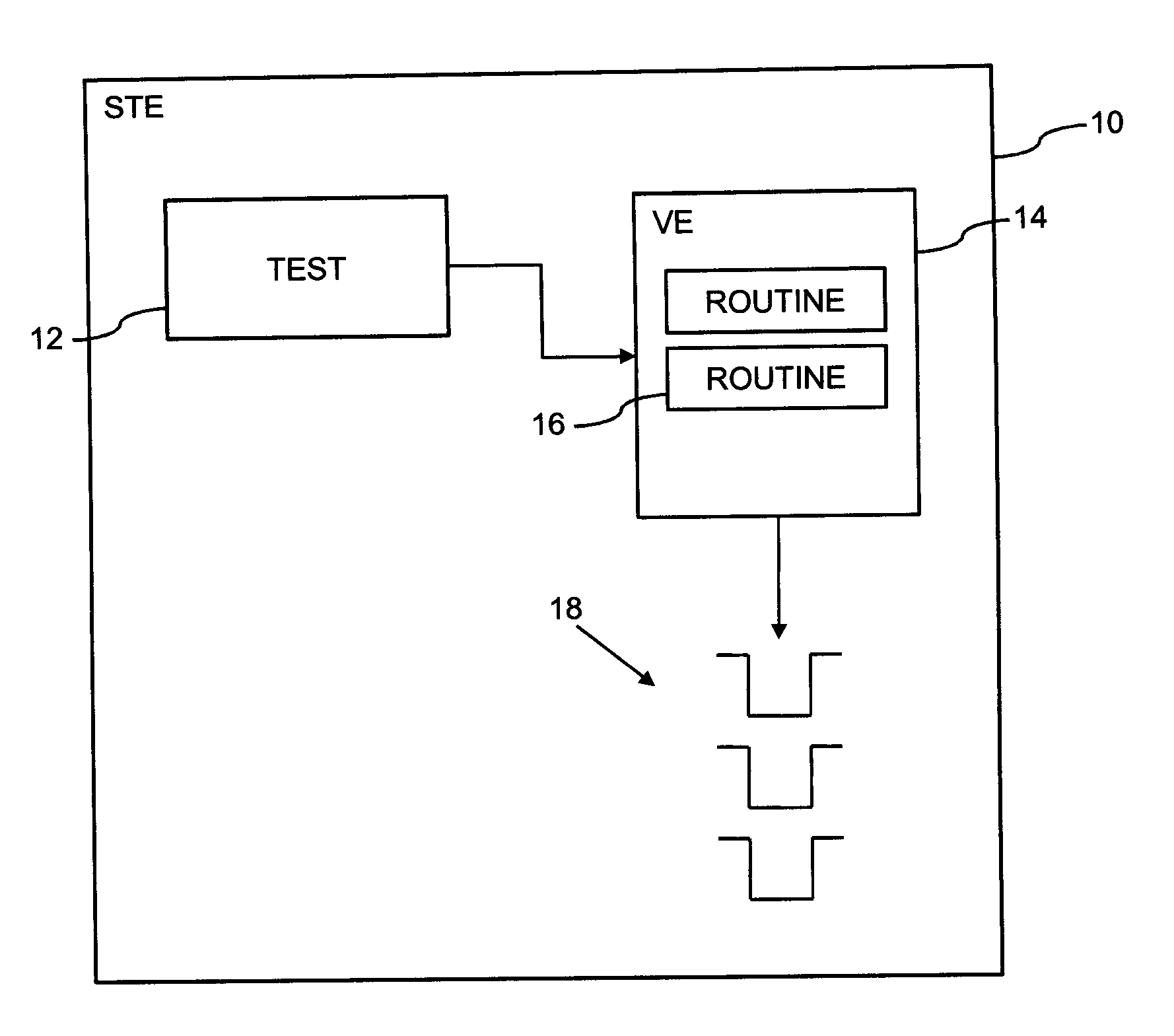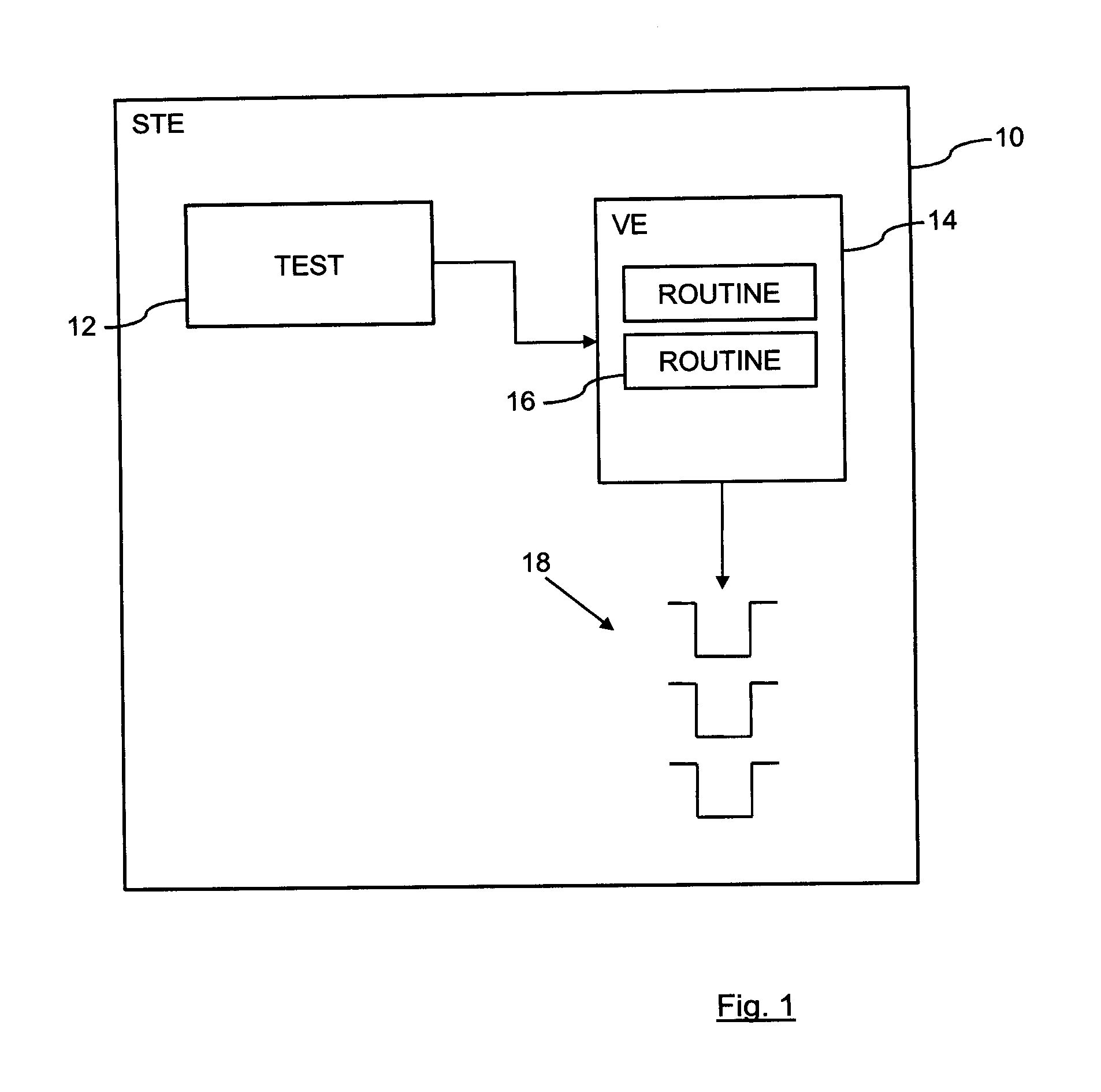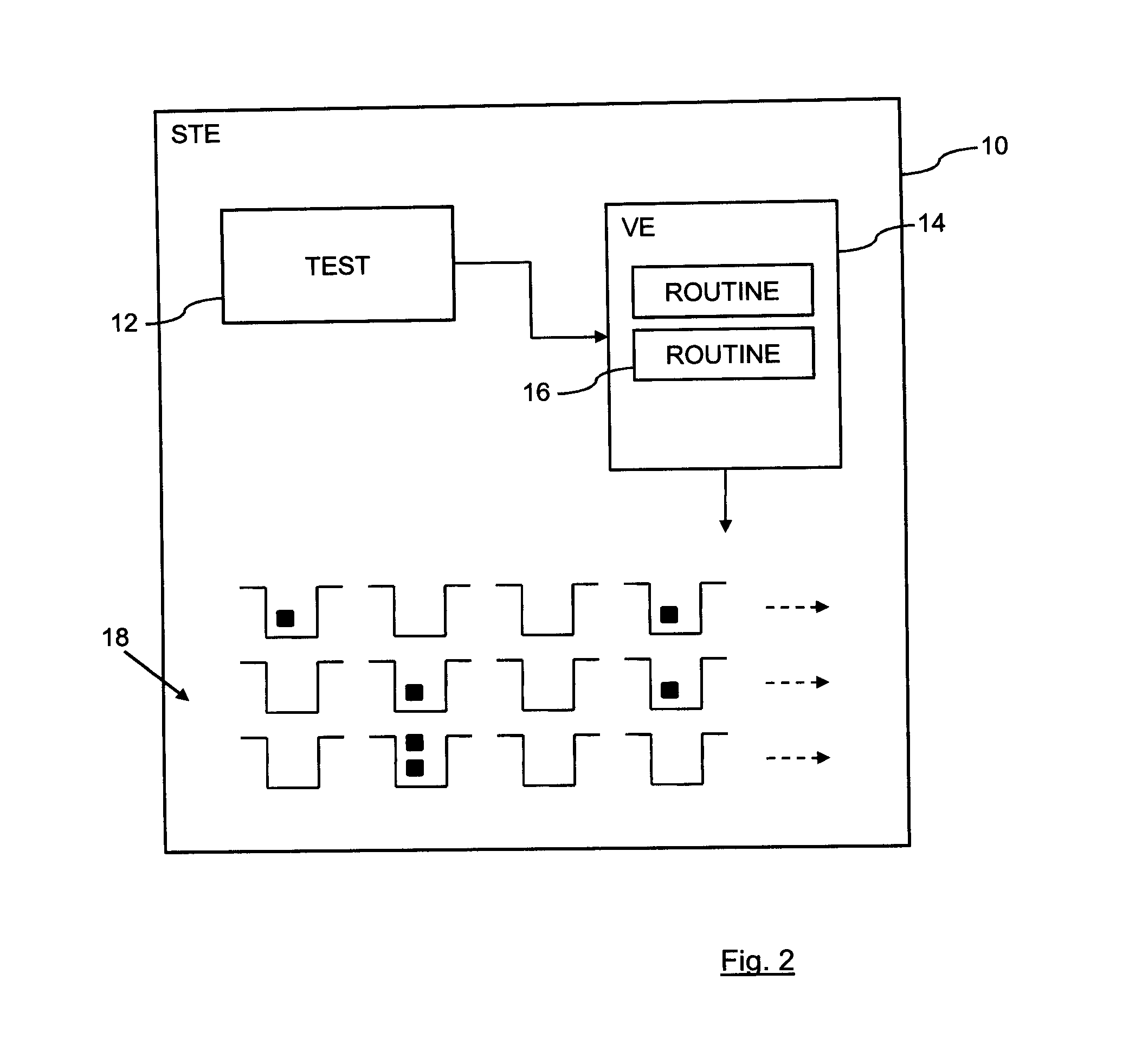Test Operation
a test operation and test technology, applied in the field of test operation, can solve the problems of misplaced confidence, unsustainable complexity in the management of the testing process, and insufficient functional models, and achieve the effect of simple and flexible methods
- Summary
- Abstract
- Description
- Claims
- Application Information
AI Technical Summary
Benefits of technology
Problems solved by technology
Method used
Image
Examples
Embodiment Construction
[0021]FIG. 1 shows an example of a system test environment 10. In the system test environment 10 a processing function runs one or more tests 12 on systems that need to be tested. When the tests 12 are run, they generate events which are then passed to a validation environment 14 for evaluation by validation routines 16. An event might be a link to an object or a communication between two specific components within the system being tested. The validation routines 16 are designed to listen for the events that are relevant to the respective routines 16. As the validation routines 16 process the events that they receive, they populate result buckets 18.
[0022]The population of the buckets 18 can be based on a standard format for the content and a naming convention that allows the purpose of the bucket 18, for example a count of how many transactions are routed over different connection types, to be identified by any test scenario that wishes to use the information in the individual buck...
PUM
 Login to View More
Login to View More Abstract
Description
Claims
Application Information
 Login to View More
Login to View More - R&D
- Intellectual Property
- Life Sciences
- Materials
- Tech Scout
- Unparalleled Data Quality
- Higher Quality Content
- 60% Fewer Hallucinations
Browse by: Latest US Patents, China's latest patents, Technical Efficacy Thesaurus, Application Domain, Technology Topic, Popular Technical Reports.
© 2025 PatSnap. All rights reserved.Legal|Privacy policy|Modern Slavery Act Transparency Statement|Sitemap|About US| Contact US: help@patsnap.com



